The EMS Lighthouse Project
The EMS Lighthouse Project Podcast exists to foster knowledge translation from peer-reviewed scientific journals to the street. Join Mike Verkest and Dr. Jeff Jarvis as they shine the bright light of science on EMS practice in an informative and fun way.
Ep 100 - Amio v Lido in OHCA w Tanner Smida
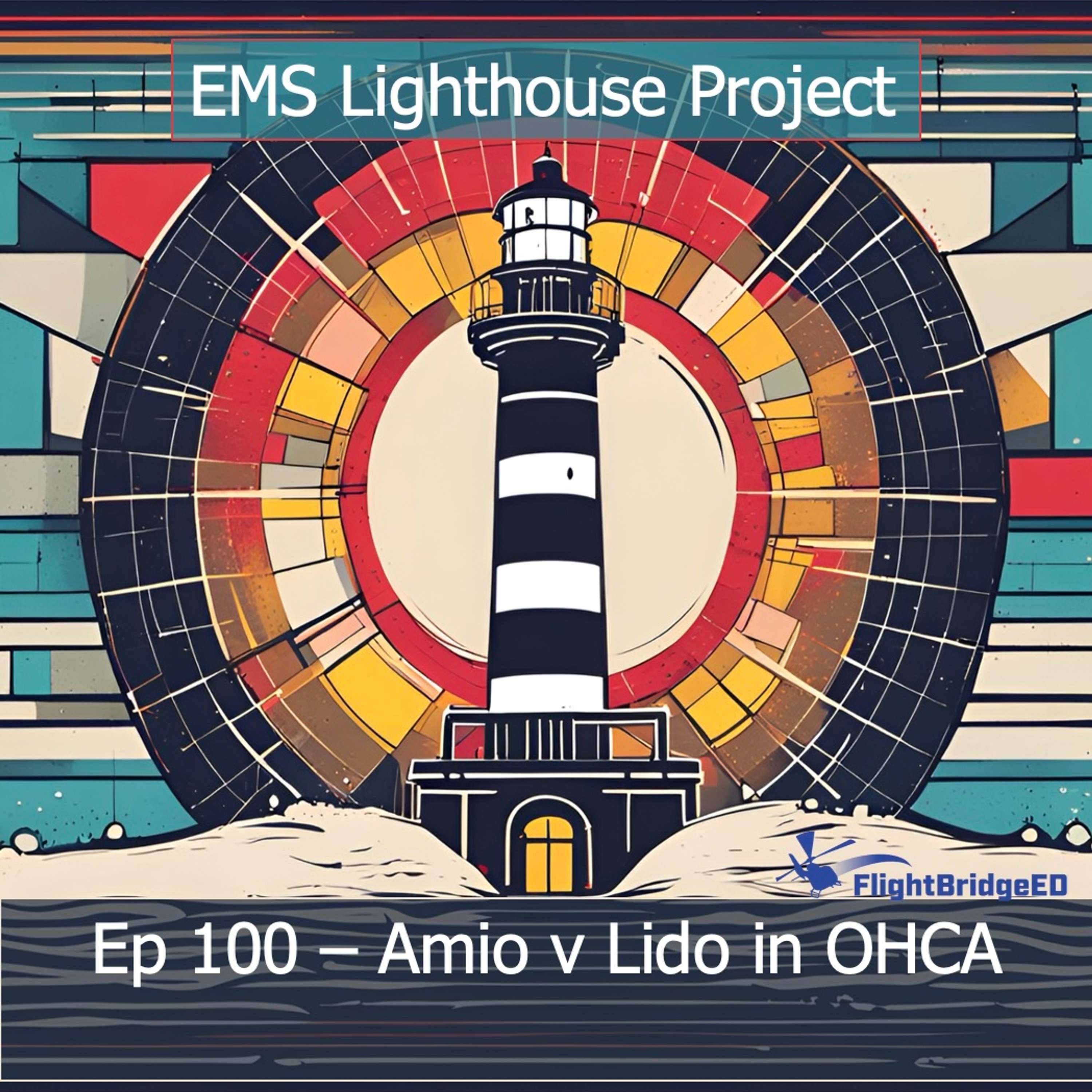
The 2017 NEJM study, ALPS, compared amiodarone, lidocaine, and placebo for refractory shockable rhythms in adults with out of hospital cardiac arrest. They found no significant difference in survival to hospital discharge or functional survival between any of the arms. If that study has left you confused, you’re not alone.
And you’re in luck. Tanner Smida joins us again to discuss his latest paper using something called target trial emulation to assess the difference in ROSC and survival to discharge between amiodarone and lidocaine. This is a great discussion of his paper, the methodology, and how we ca...
Ep 99 - Adenosine or Diltiazem for SVT?

We just got a new paper that compares initial treatment with adenosine compared with diltiazem for the treatment of adults with SVT in the ED. Wouldn’t it be great if it turned out that diltiazem was just as effective, if not more effective, as adenosine without the crappy feeling?
Yeah, that’d be great, but what do we do with statistically insignificant results. Is there, perhaps, a way to save this “insignificant” paper? Fear not, Bayes is here!
Yes, that’s right, Dr. Jarvis is grabbing this new paper and diving straight back into that deep da...
Ep 98 - Does the Sequence of RSI Medications Matter
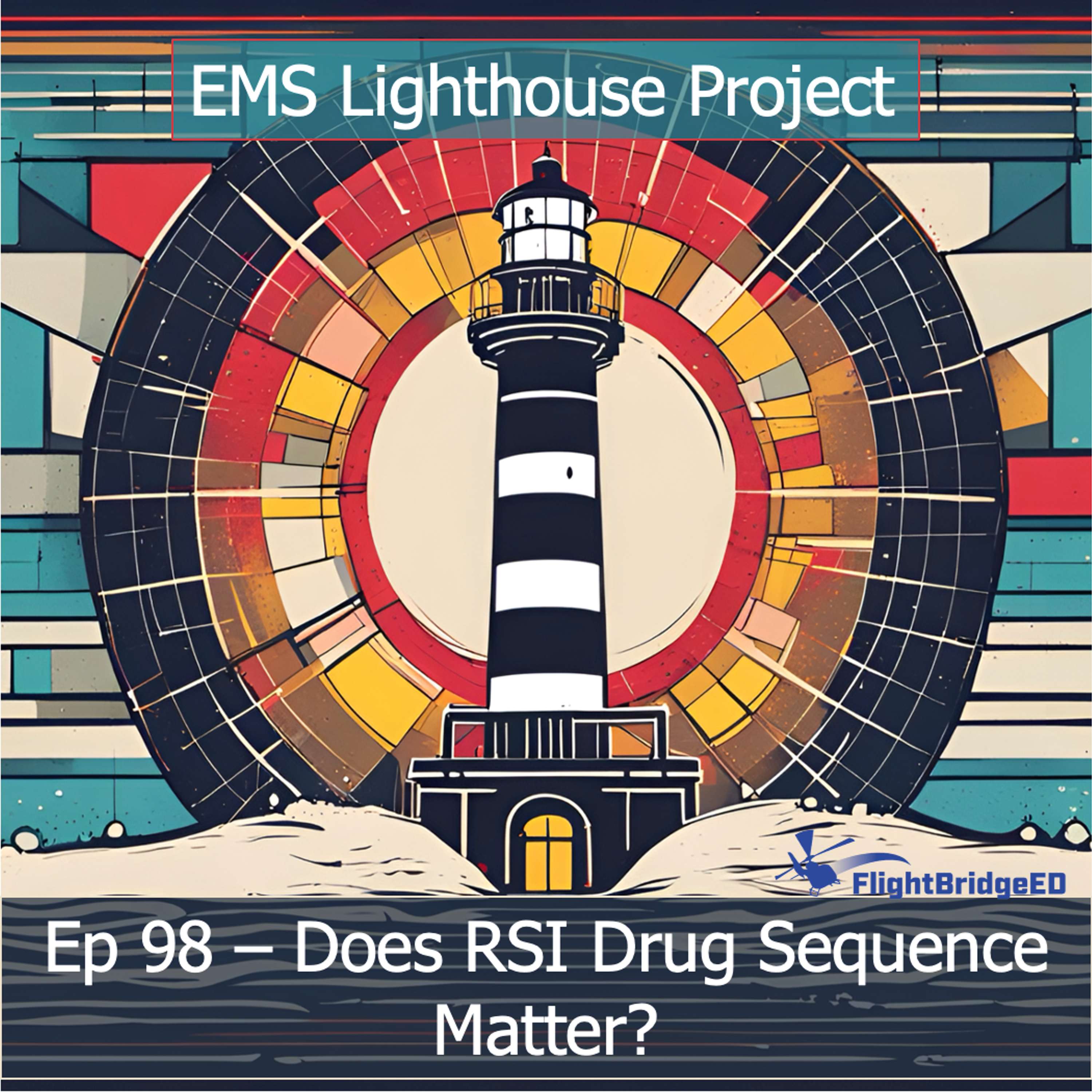
The next time you go to intubate a patient, should you give the sedation before the paralytic or the paralytic before the sedative? Does it matter? And what the hell does Bayes have to do with any of this? Dr Jarvis reviews a paper that uses Bayesian statistics to calculate the association between drug sequence and first attempt failure. Then he returns to Nerd Valley to talk about how to interpret 95% confidence intervals derived from frequentists statistics compared to 95% credible intervals that come from Bayesian statistics.
Citations:
1. Catoire P, Driver B, Prekker ME, Freund Y: Effe...
E97 - Bayes and Calcium Before Diltiazem in Atrial Fibrillation

We covered a paper in episode 81 that suggested treating atrial fibrillation with rapid ventricular response in the field could lower mortality. But it also drops BP a bit. Could pretreating these patients with calcium lower the risk of hypotension? Dr Jarvis puts on his nerd hat and uses Bayesian analysis to assess a new randomized, placebo-controlled study that looked at just this thing. Why is he going off on this Bayes thing? Because he’s been reading a couple of book on it and wanted to take it for a spin.
Tables:
E96 - MCD Wrap Up

Wrapping up a series of 5 episodes, Dr Jarvis finishes his discussion of mechanical CPR devices (MCDs) talking about papers from Utah, Vienna, Anchorage, and Cincinnati and then gives his take on how to interpret the literature and put it into practice.
Papers discussed:
1) Youngquist ST, Ockerse P, Hartsell S, Stratford C, Taillac P: Mechanical chest compression devices are associated with poor neurological survival in a statewide registry: A propensity score analysis. Resuscitation. 2016;September;106:102–7.
2) Zeiner S, Sulzgruber P, Datler P, Keferböck M, Poppe M, Lobmeyr E, Van Tulder R, Zajicek A, Buchinger A, Polz K...
E95 - LUCAS Literature
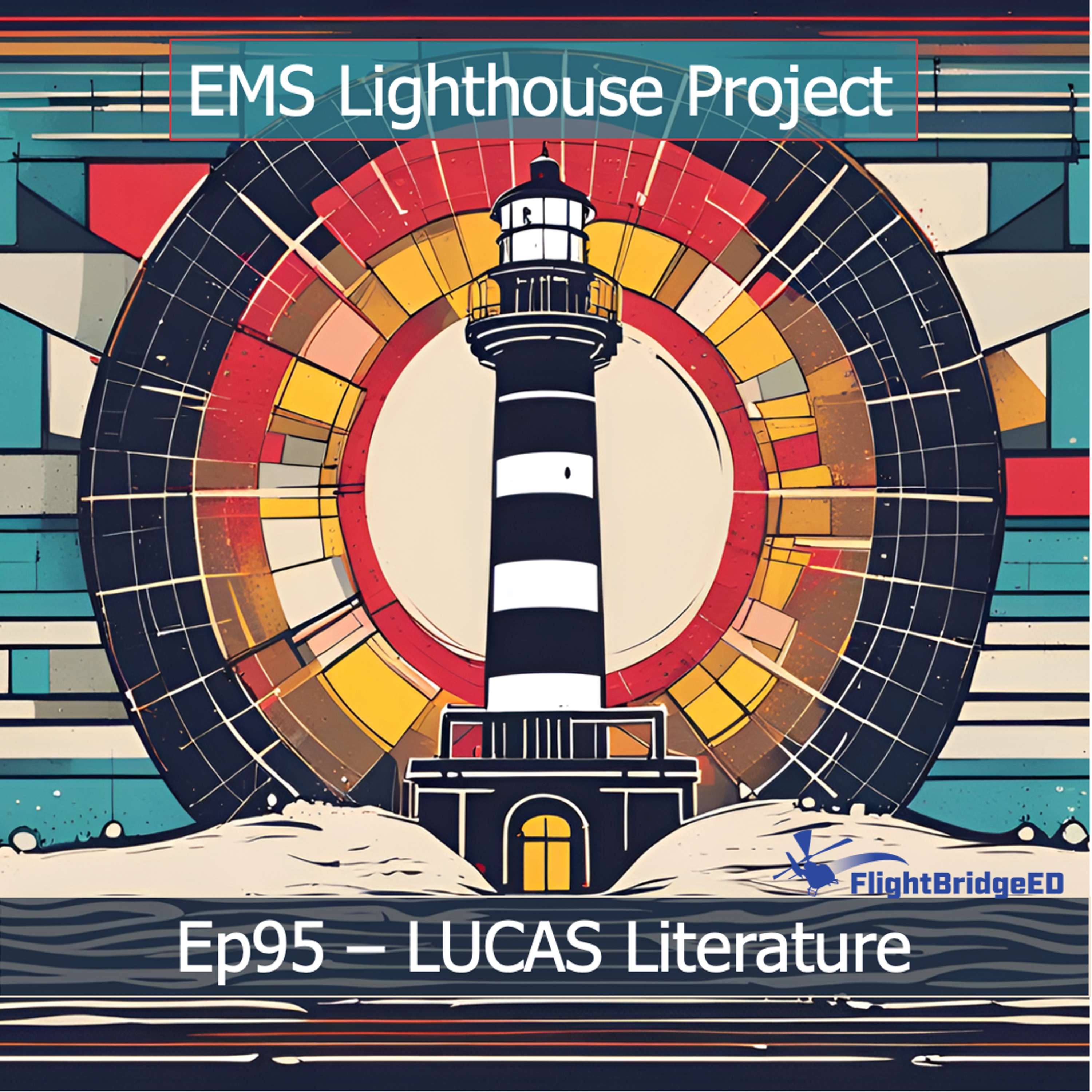
Last episode we described the literature showing no survival benefit to patients with the AutoPulse device. Fear not, I wasn’t ignoring the LUCAS, I just felt it deserved it’s own episode. We’ll cover the LINC and PARAMEDIC randomized controlled trials and the secondary analysis of LINC in shockable rhythms.
I switched to a new production process using a new mic (Rode NT1) and started using ecamm to record. Yes, I know there is a bit of AV dysynchrony.. I’m working on it. I still have a lot to learn about ecamm but am optimisti...
E94 - AutoPulse Literature
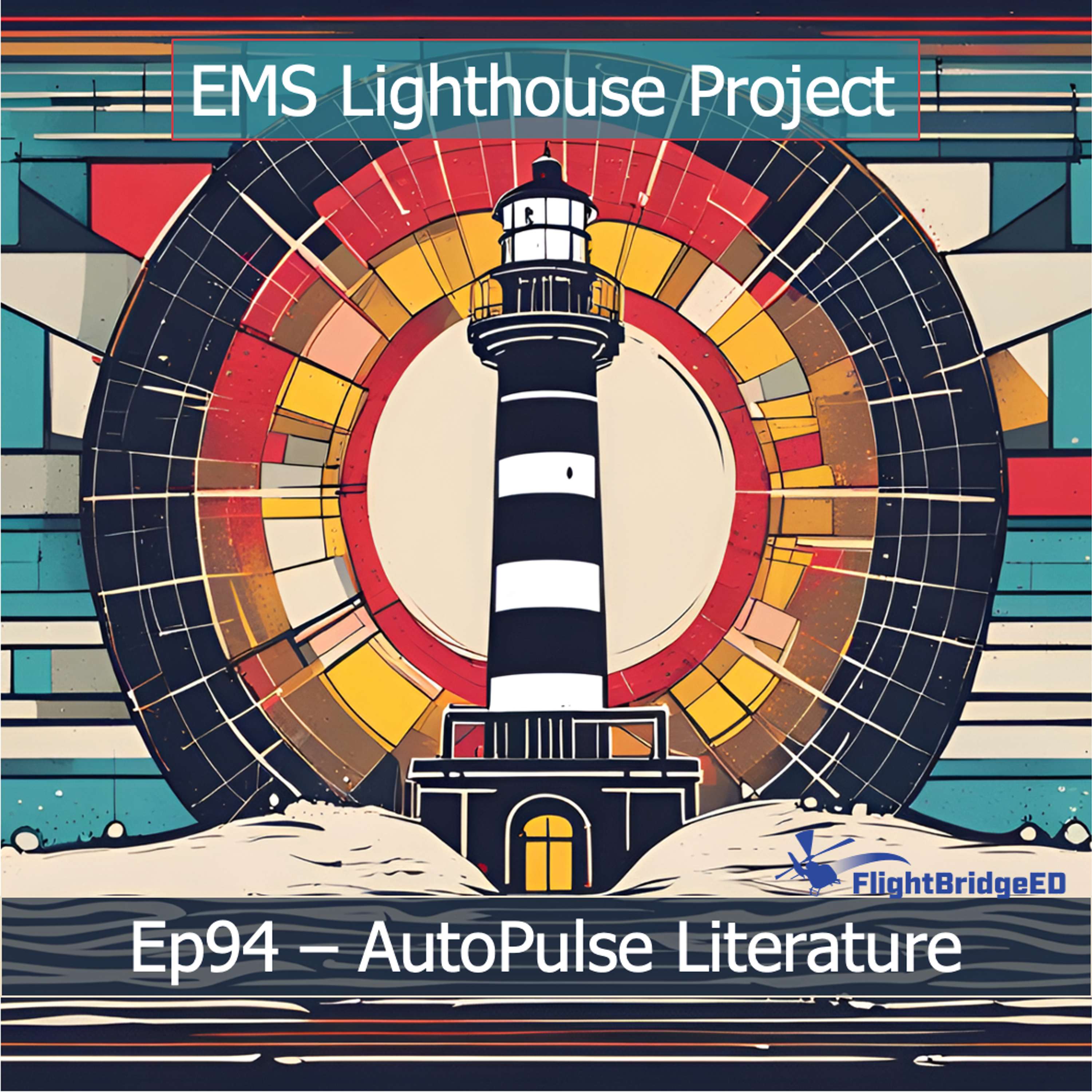
Our story so far.. episode 92 looked at a study showing lower survival from in-hospital cardiac arrest in patients treated with mechanical compression devices. Episode 93 discussed an implementation study of implementing LUCAS devices in a system with high quality pit crew CPR also showing lower survival, despite spending lots of time in training on how to optimally apply the LUCAS to avoid prolonged compression interruptions and movement.
Now we’re diving into the literature around AutoPulse, the load-distributing band device. We’ll cover two randomized controlled trials and one well-done observational study comparing AutoPulse to manual CPR. Don’t worry...
E93 - LUCAS: The Austin Experience
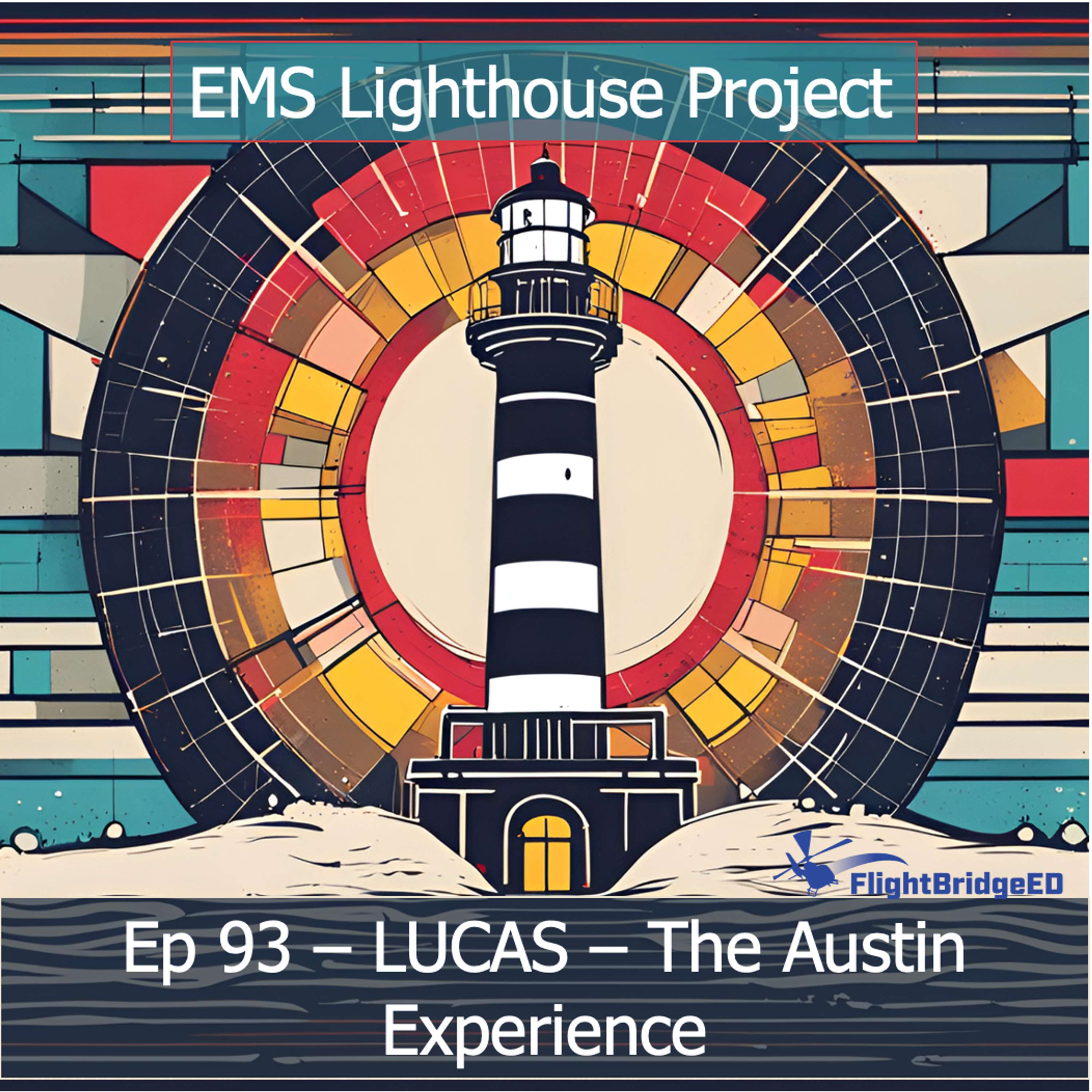
Ever wonder what would happen to cardiac arrest survival after a system implements LUCAS devices and trains really hard to deploy them appropriately? Wonder no more. Dr Jarvis reviews a paper from the Austin/Travis County EMS System that will shed some light on the question. This is the second episode in a series on mechanical compression devices.
Citations:
1. Gonzales L, Oyler BK, Hayes JL, Escott ME, Cabanas JG, Hinchey PR, Brown LH: Out-of-hospital cardiac arrest outcomes with “pit crew” resuscitation and scripted initiation of mechanical CPR. The American Journal...
Ep 92 - Mechanical CPR in InHospital Arrest
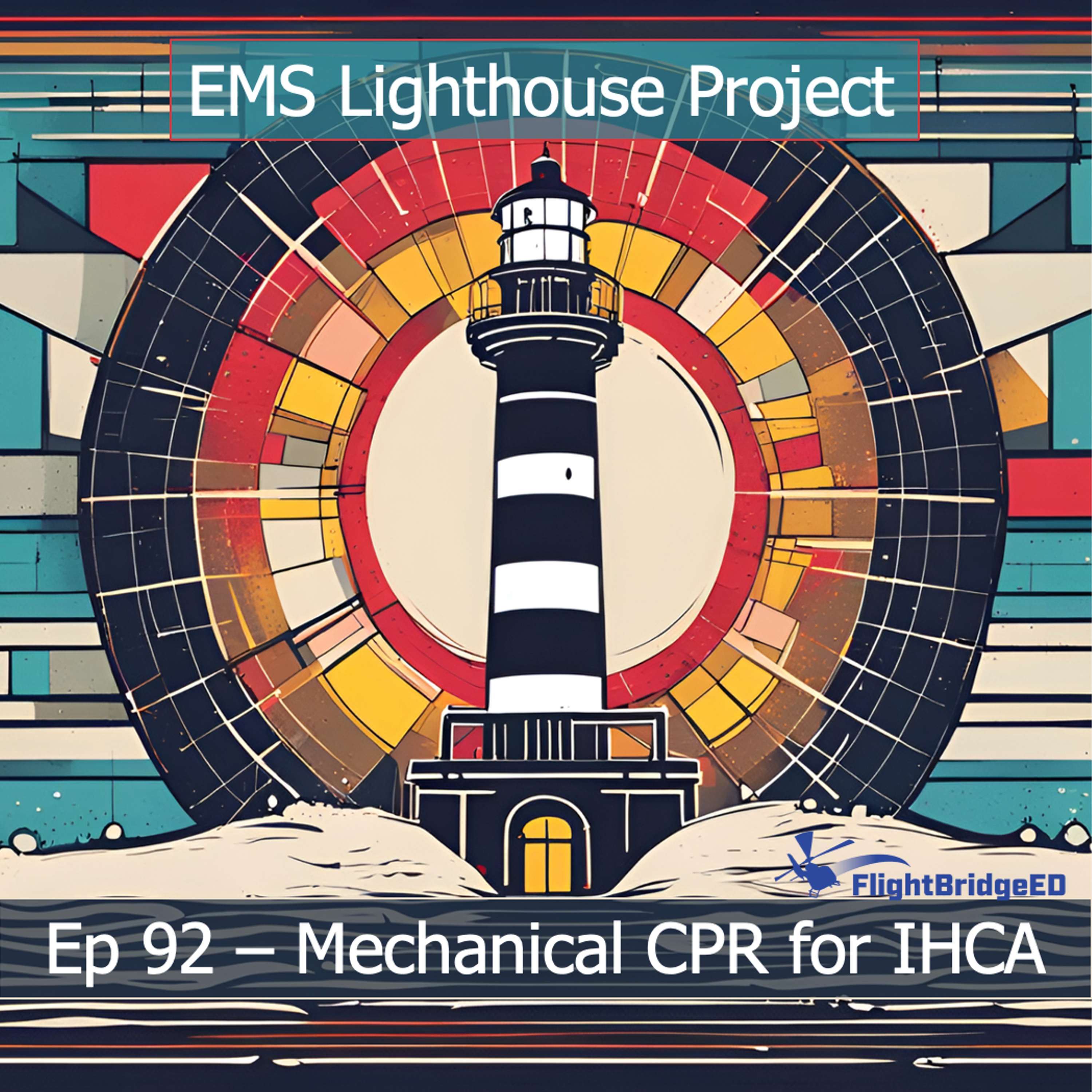
We know the literature on mechanical CPR devices on mortality in out of hospital cardiac arrest (we DO know this literature, right?), but what about in-hospital arrest? Dr. Jarvis reviews a recent paper that uses the AHA Get With The Guidelines - Resuscitation registry to assess the association between MCDs and mortality.
Citations
1. Crowley C, Salciccioli J, Wang W, Tamura T, Kim EY, Moskowitz A: The association between mechanical CPR and outcomes from in-hospital cardiac arrest: An observational cohort study. Resuscitation. 2024;May 1;198.
2. Rubertsson S, Lindgren E, Smekal D, Östlund O, Silfverstolpe J, Lichtveld RA, Boomars R...
Ep 91 - The Bloody Details
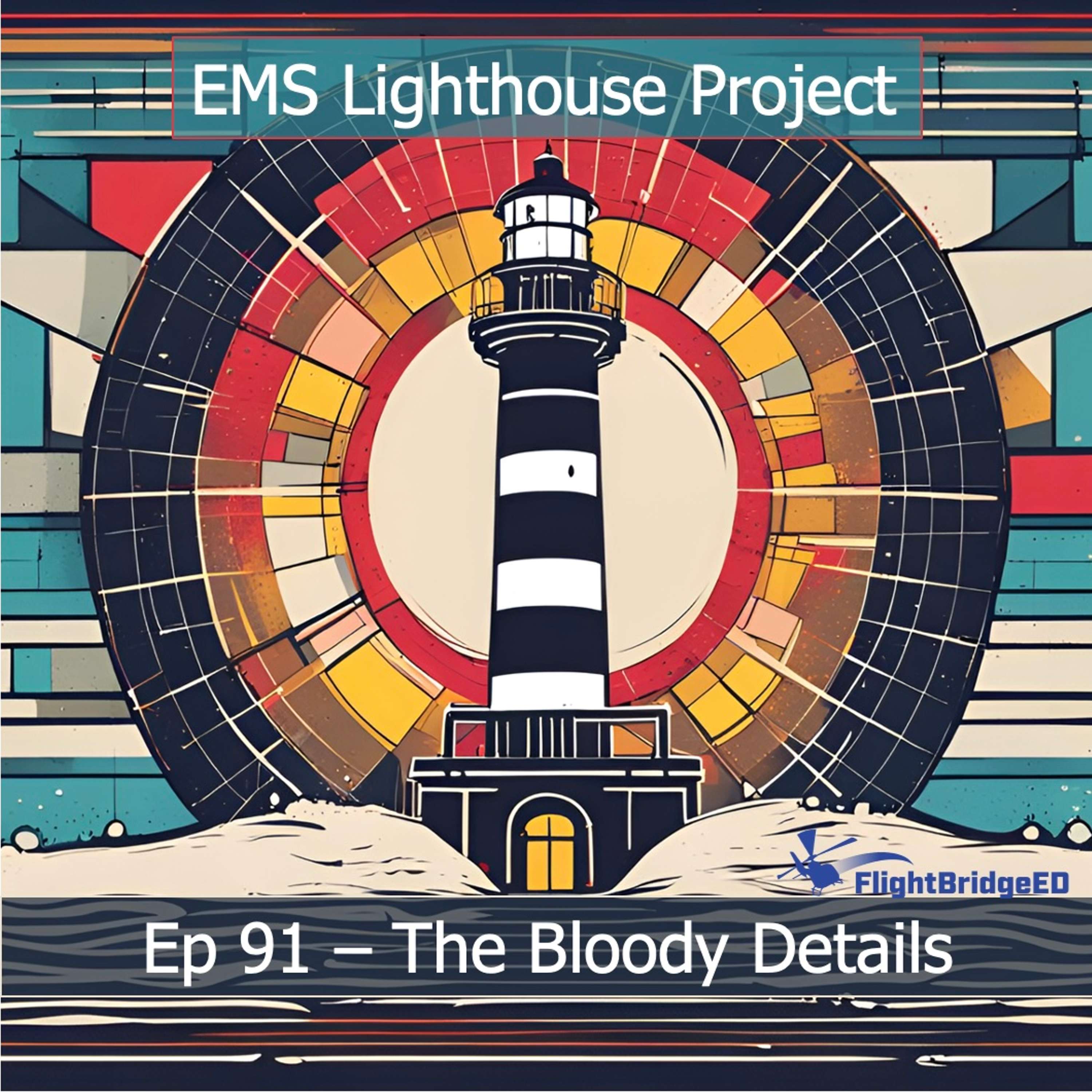
New Orleans implemented a blood program and assessed the impact of the program on mortality. Dr Jarvis dives into the details of the paper and then Dr Remle Crowe joins in for a discussion on why studying blood in the field is so difficult.
Citation:
Broome JM, Nordham KD, Piehl M, Tatum D, Caputo S, Belding C, De Maio VJ, Taghavi S, Jackson-Weaver O, Harris C, et al.: Faster refill in an urban emergency medical services system saves lives: A prospective preliminary evaluation of a prehospital advanced resuscitative care bundle. J Trauma Acute Care Surg. 2024;May;96(5):702–7.
Ep90 - IV vs IO in OHCA
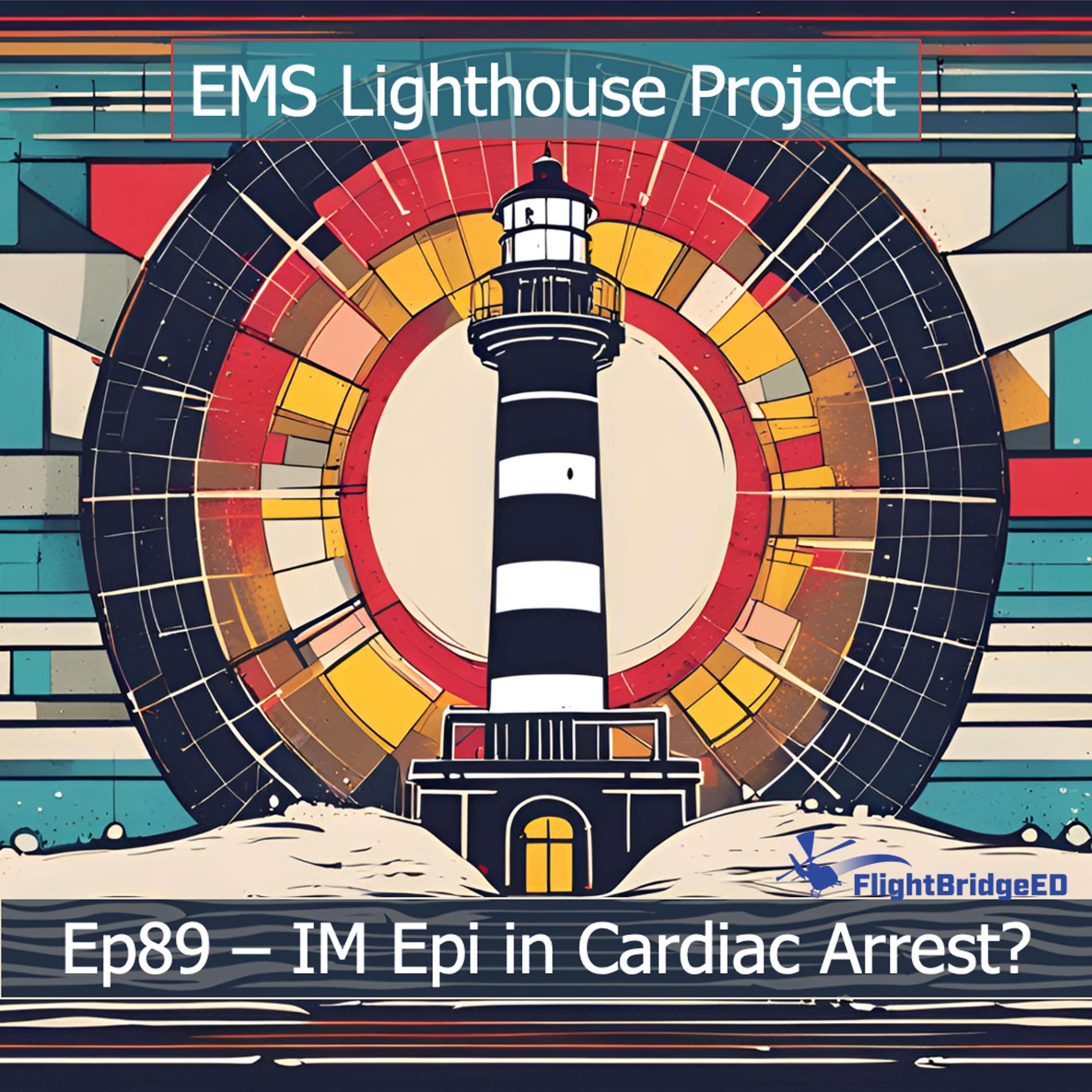
We've reviewed several papers in the past that suggest there might be an advantage to using IV access compared to IO access for medications in cardiac arrest. Is that really a thing? Wouldn't it be great if we had some randomized controlled trials to help answer the questions?
Funny you should mention RCTs. Dr Jarvis reviews three (THREE!) new RCTs that compare IV to IO access in out of hospital cardiac arrest to try to shed some of that bright light of science on this question!
Citations:
1. Vallentin MF, Granfeldt A, Klitgaard TL, M...
Ep 89 - IM Epi in OHCA, Part II
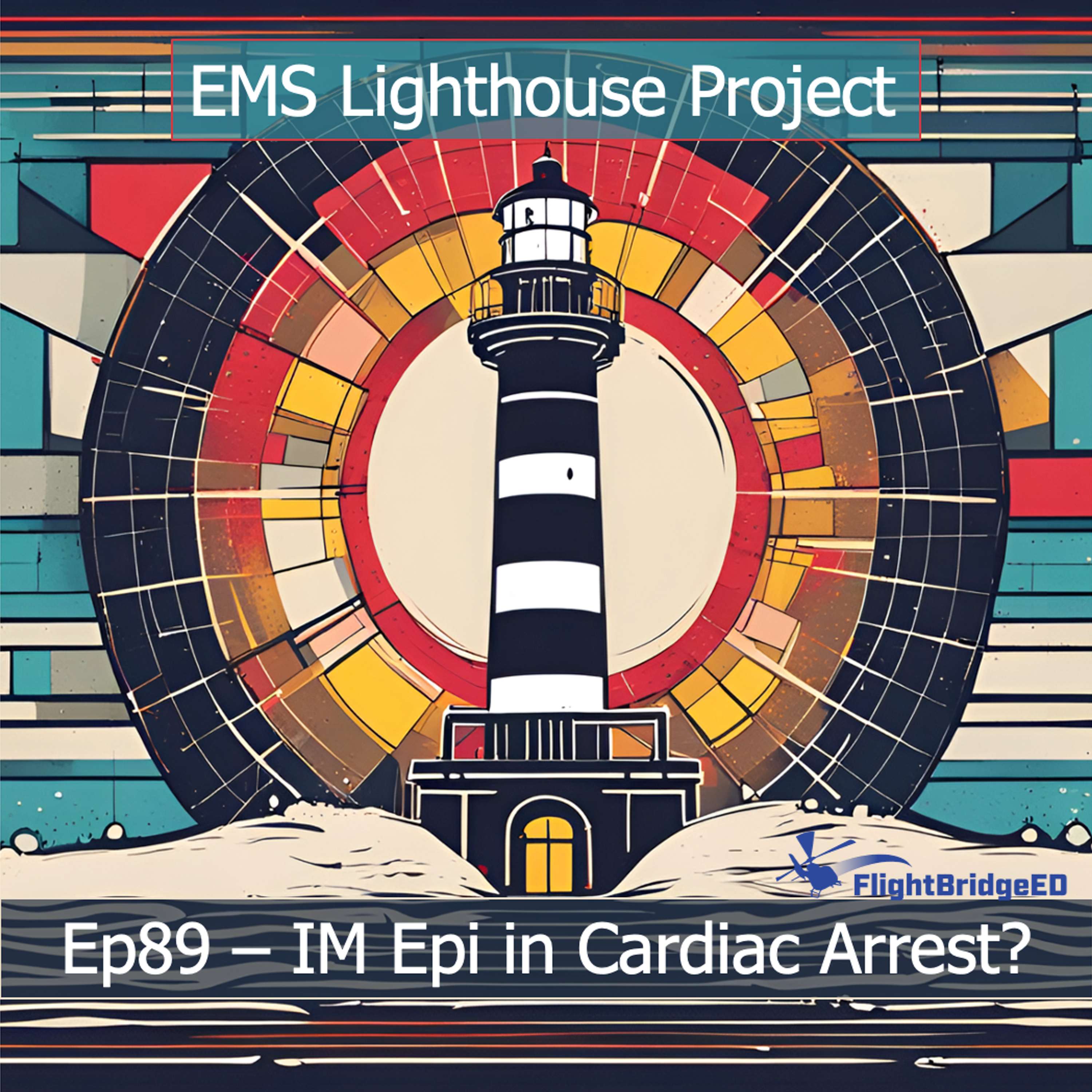
Back in episode 80 we discussed a feasibility study out of Salt Lake City that showed IM epi resulted in 3-minute faster administration in cardiac arrest. It was underpowered to show survival, however. Fortunately, the great folks in Salt Lake City is back with a larger bite at the statistical apple. Dr Jarvis discusses the background around what we know about epinephrine in cardiac arrest (briefly, for once), walks us through this new study, and puts it in context of modern clinical practice.
Citations.
1. Palatinus HN, Johnson MA, Wang HE, Hoareau GL, Youngquist ST: Early intramuscular a...
Ep88 - Naloxone in Cardiac Arrest?
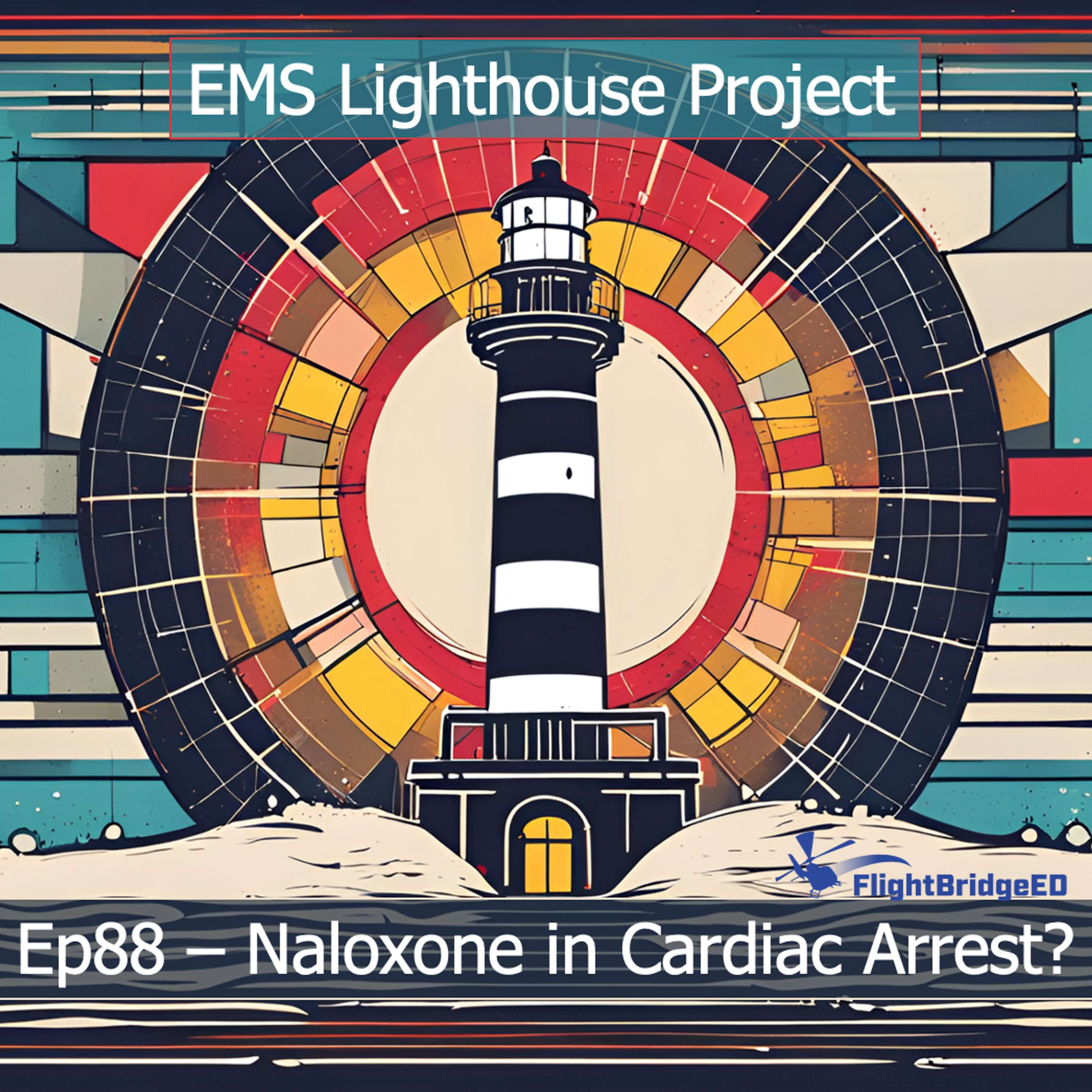
Do you give naloxone to patients who are in cardiac arrest? Should you? Can it possibly provide any benefit at all once you are already providing effective ventilations? Well, Dr. Jarvis certainly thought not. He might have even thought it out loud. Like, loudly out loud.
Based on two recent papers looking directly at this question, perhaps he needs to eat some crow and shine the bright light of science on his own damn practice.
Citations:
1. Strong NH, Daya MR, Neth MR, Noble M, Sahni R, Jui J, Lupton JR: The association of ea...
Ep87 - Those CPR Pauses, Though...
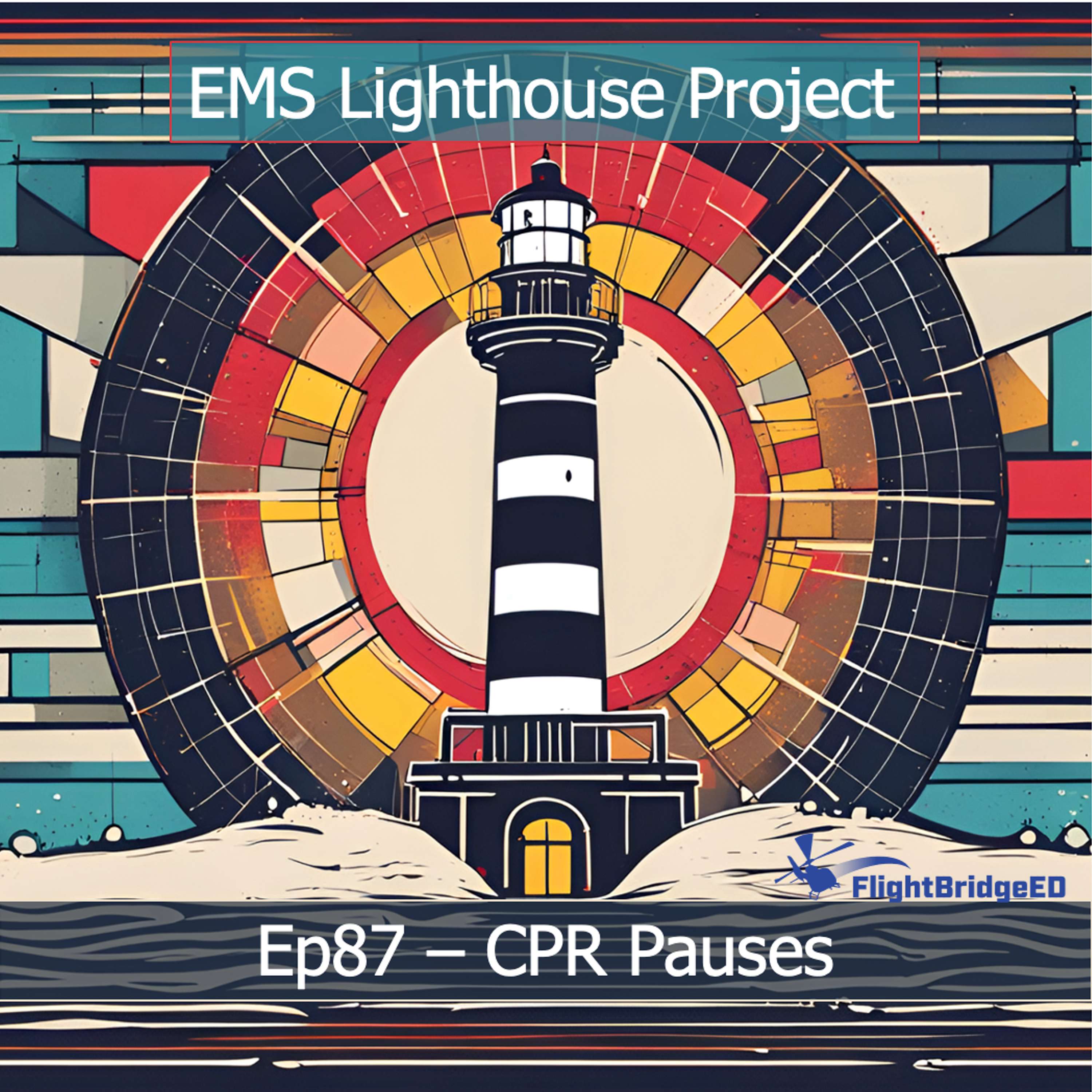
Remember when we learned interruptions in compressions take a long time to recover blood pressure from? And how, to avoid these, we should do continuous compressions to avoid them. And ventilations aren’t all that important. Right? Right? Well, about that. Maybe the stories of the importance of continuous compressions were greatly exaggerated. Join Dr. Jarvis as he discusses the literature that led us to this point and some evidence that has led him to reconsider how his system approaches cardiac arrest. He’ll eventually get around to discussion a recent paper by Dr. Rose Yin that analyzes arterial pres...
Ep86 - The PREOXI Trial
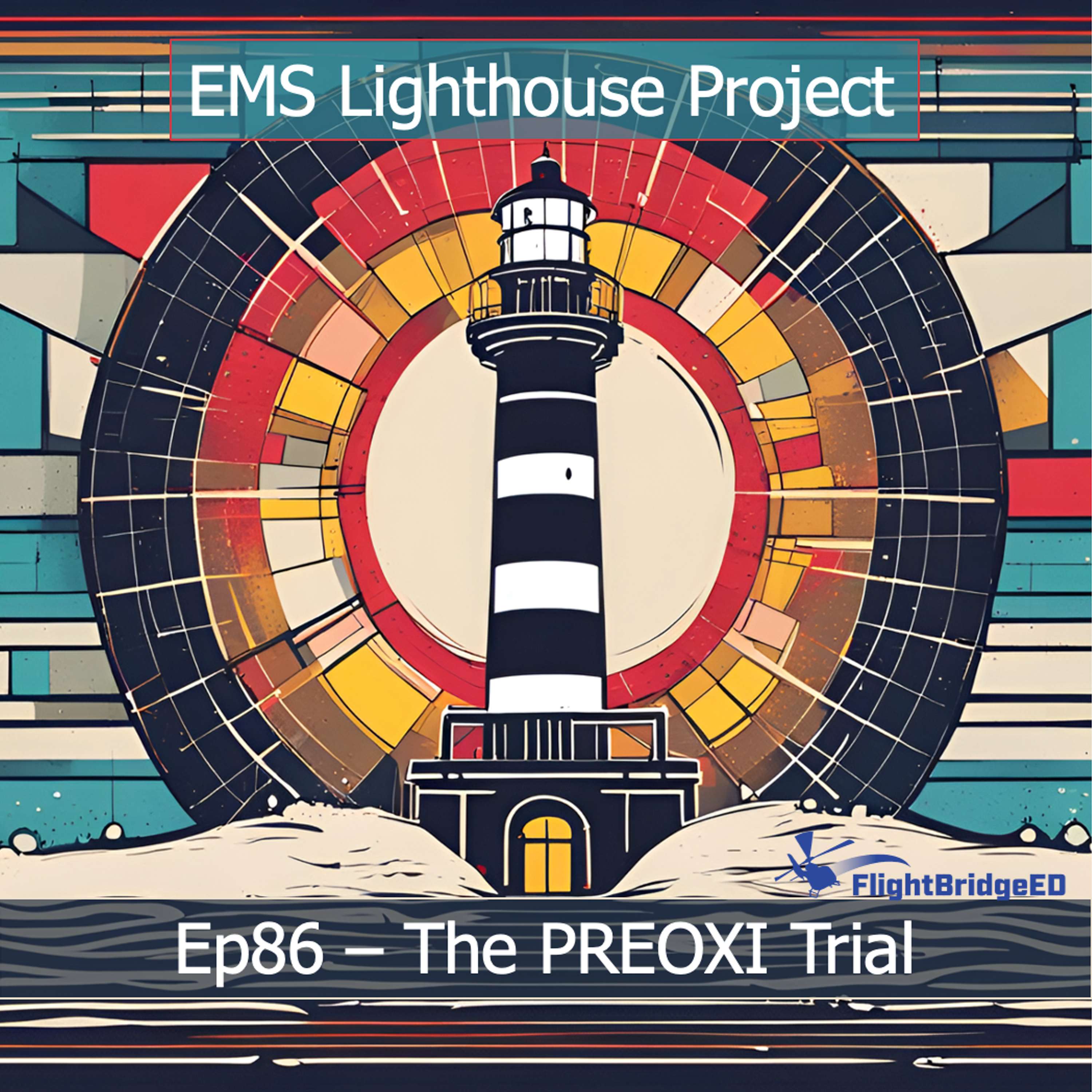
What’s the best way to pre-oxygenate our patients prior to intubation? The evidence for this question has been mixed for some time. Dr Jarvis discusses the PREOXI Trial, which directly compares preoxygenation with non-invasive ventilation compared to a face mask to see which provides the best protection against peri-intubation hypoxia. This is an important trial that sheds light on a key component of our bundle of care to make intubation safer.
Citations:
Gibbs KW, Semler MW, Driver BE, Seitz KP, Stempek SB, Taylor C, Resnick-Ault D, White HD, Gandotra S, Doerschug KC, et al.: Noninvasive Ve...Ep85 - Intubation: Is More Better?

There is evidence that clinician experience with intubation is associated with improved success rates and evidence that missed intubation attempts are associated with worse survival, at least in cardiac arrest. The recent Airway EBG paper recommends EMS agencies with low intubation proficiency should use SGAs instead of intubation in cardiac arrest. This all begs the question of whether agencies who intubate more often have higher success rates than those who do not. That’s precisely the question a new paper from Annals of Emergency Medicine attempts to answer. Join Dr. Jarvis to discuss the paper and his thoughts on in...
Ep84 - Nebulized Ketamine?
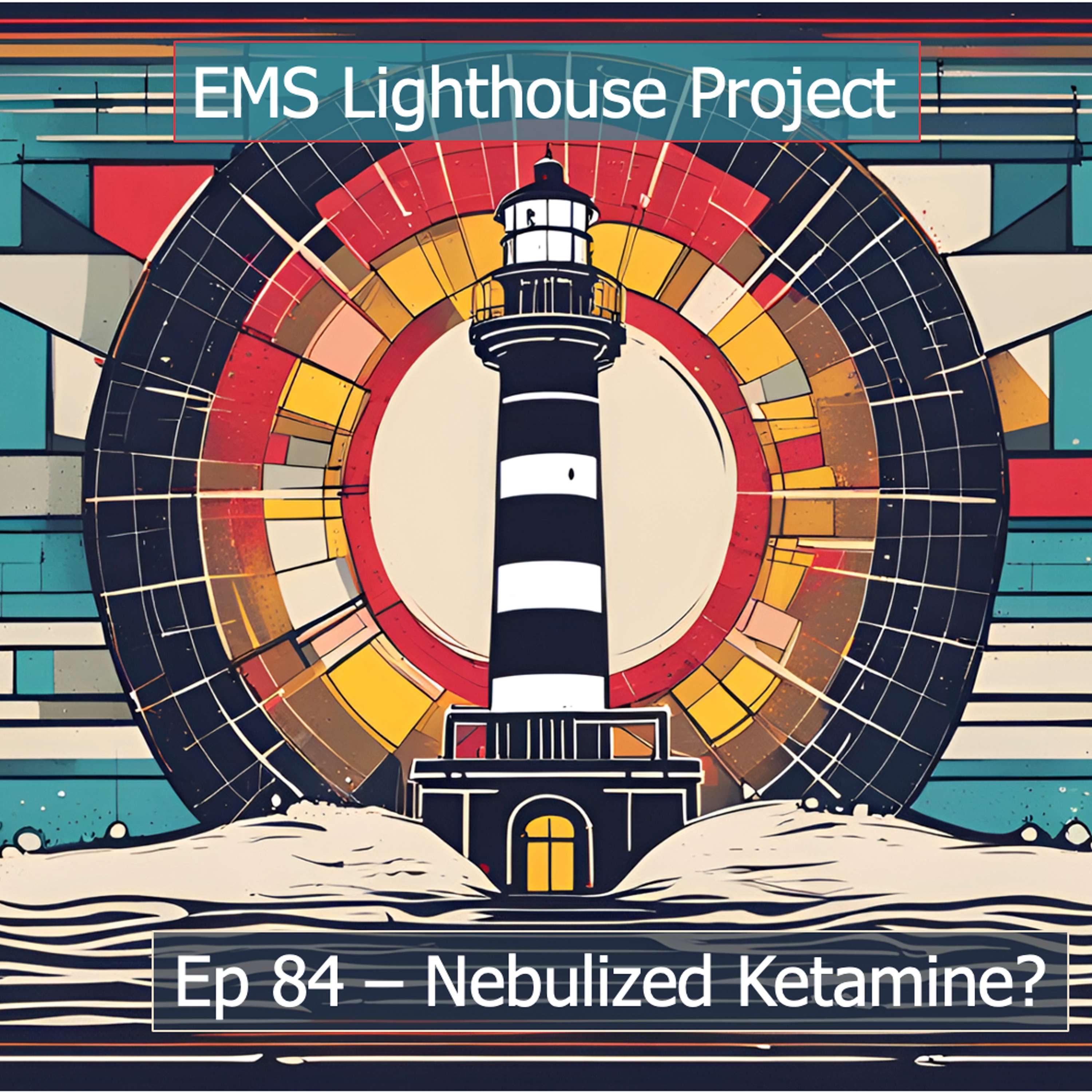
Description:
Let’s say you were looking for a safe and effective BLS option for analgesia. Something other than oral acetaminophen or ibuprofen. You want the Green Whistle (methoxyflurane), but you can’t get the Green Whistle (thanks, FDA!). How about sub-dissociative ketamine by nebulizer? Sounds great, but you’re worried about your colleagues getting stoned, right? Admit it, you are. Fortunately, there are breath-actuated nebulizers. Maybe those things will work?
Dr. Jarvis reviews a recent paper comparing the effectiveness of nebulized ketamine with IV ketamine and gives a quick review of some other pa...
Ep 83 - EtCO2 in Cardiac Arrest
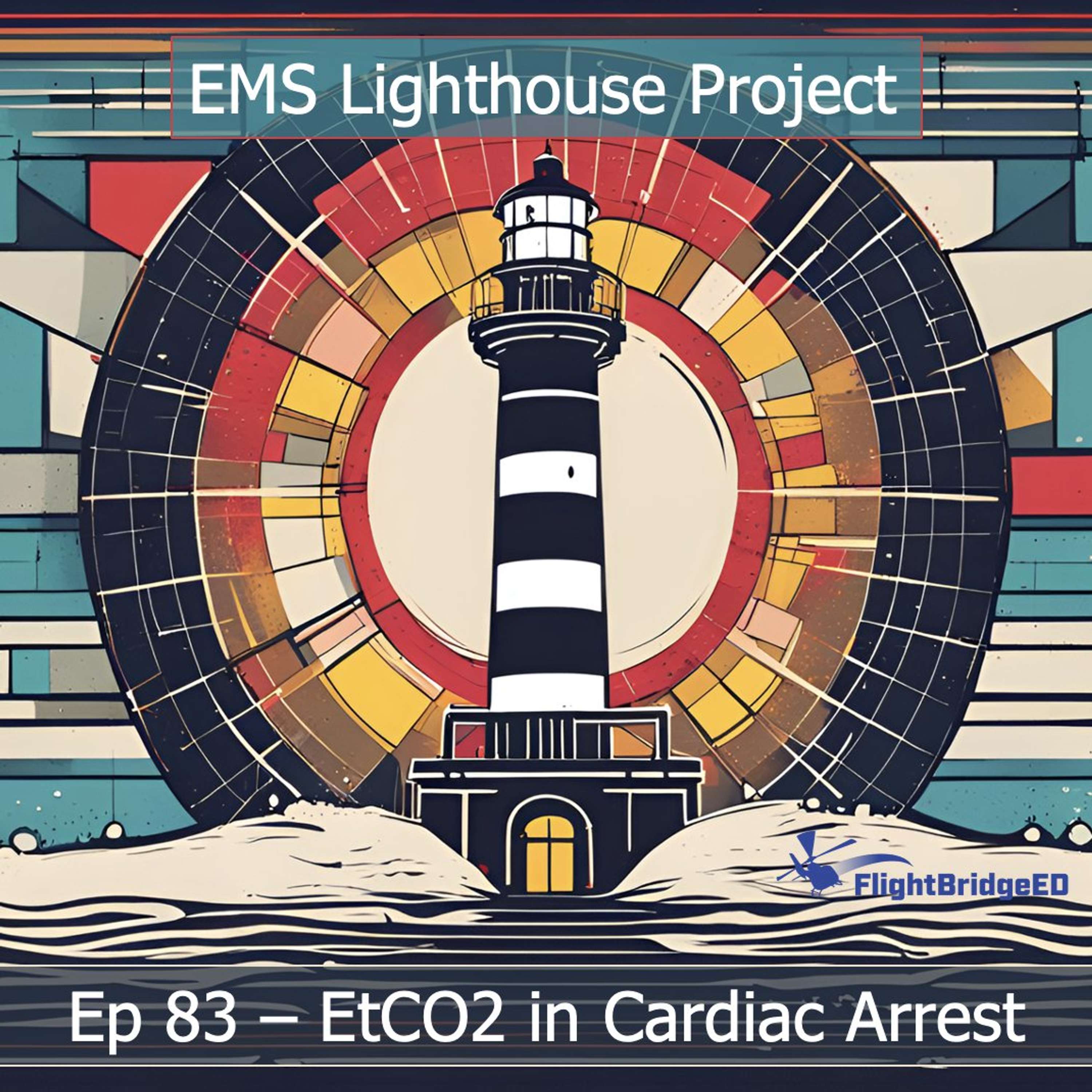
What value does EtCO2 have when predicting survival from cardiac arrest? We all know a sharp spike in EtCO2 is associated with ROSC, but what about persistently elevated levels? What does this mean for decision-making regarding the termination of resuscitation?
Join Drs. Jeff Jarvis, Remle Crowe, and Heidi Abraham for the first episode of “Between Two Nerds,” a subgenre of the EMS Lighthouse Project podcast suggested in episode 82 by Dr. CJ Winckler, as they run through a new paper that may shed some light on this question.
Citation:
1. Smida T, Men...
E82 - Ketamine v Etomidate for RSI: A Bayesian Meta-Analysis
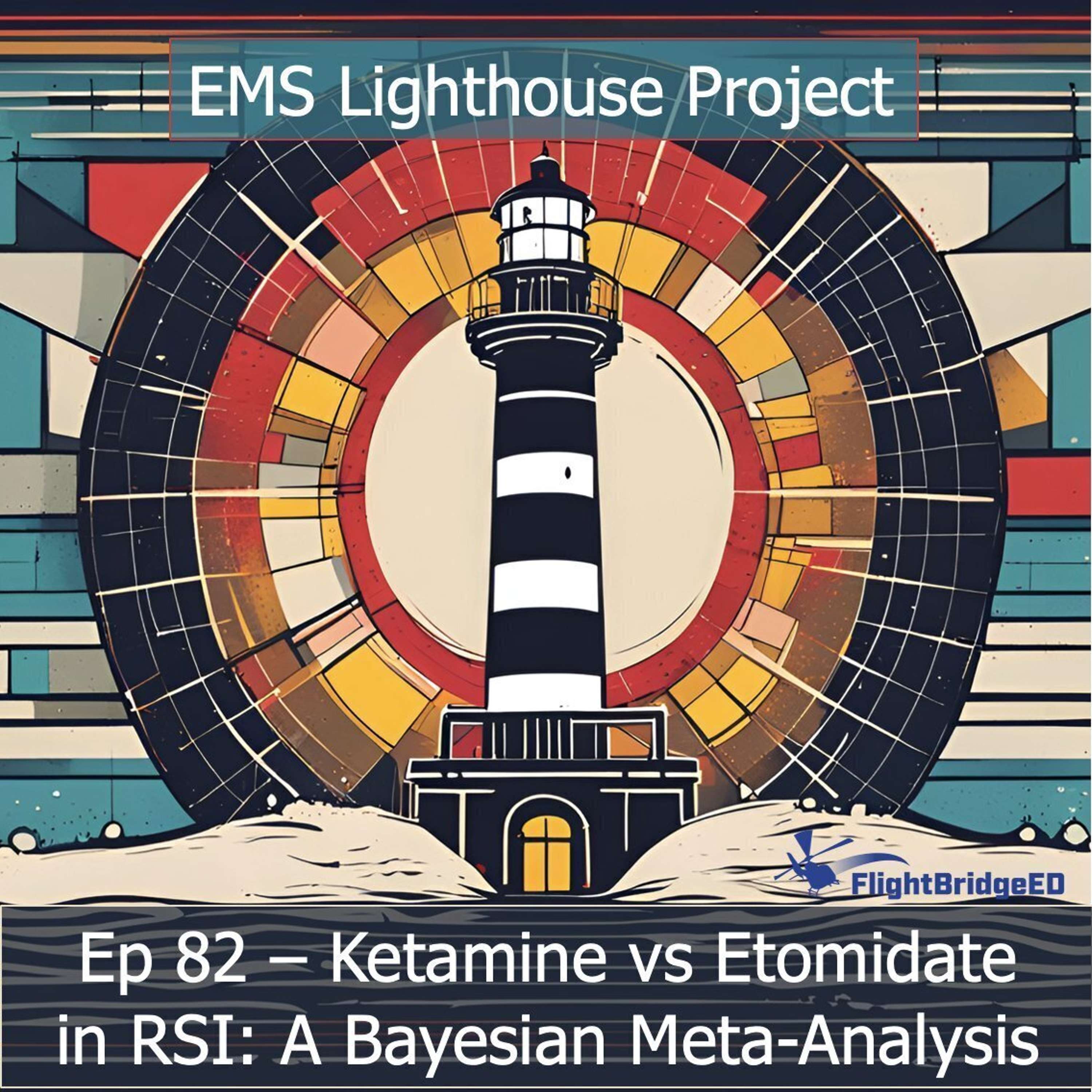
The debate about which drug to use for sedation before RSI will... not… die. Advocates for both ketamine and etomidate approach the argument with near-religious zeal. There have been studies. We’ve even covered some here. We need a systematic review and meta-analysis, preferably using an analysis that recognizes this likely isn’t a black-and-white question. That’s where our friend Bayes comes in. Dr. Jarvis is joined by Drs Remle Crowe and CJ Winkler to discuss this paper and what in the hell Bayesian analysis actually is. We get some nice book recommendations in the process. Plus, we check in...
Ep81 - Treatment of Atrial Fib with RVR

Atrial Fibrillation with rapid ventricular response is a common cause of EMS activations and ED visits. It is associated with chest discomfort, palpitations, and hypotension. Treatment is aimed at either rhythm or rate control, with rate control being the most common first-line approach. EMS has the potential to treat this condition with medications such as diltiazem, metoprolol, or amiodarone. For those patients with hemodynamic instability, EMS can provide synchronized cardioversion. However, the question for this podcast is whether it matters if EMS treats A Fib or not. Dr. Jarvis recorded this episode in front of a live audience at...
LHP E80 – IM Epi in Cardiac Arrest

Dr. Jarvis is joined by OG co-host Mike Verkest and Dr. Brent Myers from NAEMSP 2024. We discuss an intriguing concept in cardiac arrest… giving the initial dose of epinephrine IM instead of starting an IV or IO. They discuss a 2021 paper that compared this approach to standard dosing in a feasibility study done in Salt Lake City. Those authors released some additional data from this study… this time about survival. We talk about the potential ramifications.
Citations:
Pugh AE, Stoecklein HH, Tonna JE, Hoareau GL, Johnson MA, Youngquist ST: Intramuscular adrenaline for out...
LHP E79 - Head Up CPR – Not So FAST

EMS History is full of interventions we've rapidly adopted, often at great expense and with disruption of existing processes, that later turned out to, how should I say this..... not work. Want examples? MAST and high-volume crystalloids in trauma. Mechanical compression devices, high-dose epinephrine, indiscriminate calcium administration in cardiac arrest. Do I even need to mention backboards? The next bright, shiny thing promising to revolutionize cardiac arrest resuscitation is Head-Up CPR. It's certainly expensive and disruptive, but does it improve outcomes? What is the evidence?
Dr. Jarvis has thoughts. He goes deep on this topic, using a...
LHP E78 – Racial Disparities in EMS Analgesia

What would you say if I told you that Black patients were less likely to receive pain medication compared with white patients? My guess is you’d either question the methods, assume it isn’t possible, or ask why. Regardless of what your answer is, you’re going to want to listen to this episode. Mikey V returns to co-host a live episode from the ESO PCRF research forum, where we interview Drs. Remle Crowe and Jamie Kennel about their new research on this subject. I learned some things, and I think you will, too.
Here's a...
LHP E77 – Should We Reduce Sedative Dosing In RSI Of Hypotensive Patients?

Have you heard that you’re supposed to decrease the dose of your sedative when performing RSI on hypotensive patients? First, avoid asking why you haven’t addressed the hypotension before intubating.. maybe there’s a reason. Maybe. But, regardless of why, intubate you will. What about those doses? I’ve been hearing for years that I should be dropping the dose of sedation before RSI. But what evidence are these recommendations based on?
Today, we reviewed a paper aimed at providing some evidence on this question. Oh, and I offer a gratuitous plug for the ESO/P...
EMS LHP – E76 – One and Done Epinephrine

Y’all know I have thoughts on epinephrine in cardiac arrest. Perhaps you might have heard me say epinephrine “saves the heart at the expense of the brain.” I’ve also said I don’t have an issue with any epinephrine in arrest, just how we give it currently, and have wondered if less epi might do the trick. We reviewed the One and Done paper recently published from North Carolina that looks at this question.
Citations:
1. Ashburn NP, Beaver BP, Snavely AC, Nazir N, Winslow JT, Nelson RD, Mahler SA, Stopyra JP: One and Done Ep...
LHP E75 - The Device Trial

We’ve spoken a lot recently about intubation First-Pass Success, including the definition. We’ve also discussed different papers about the impact the type of laryngoscope, video or direct, has on first-pass success. A new paper compares video vs. direct laryngoscopy directly. Join us to discuss the DEVICE trial.
Citations:
1) Prekker ME, Driver BE, Trent SA, et al. Video versus Direct Laryngoscopy for Tracheal Intubation of Critically Ill Adults. N Engl J Med. Published online June 16, 2023
2) Jarvis JL, McClure SF, Johns D. EMS Intubation Improves with King Vision Video Laryngoscopy. Prehosp Emerg Care. 2015
3) Du...
LHP – E74 – What Even IS First Pass Success

What even is FPS? There's been a long-running argument about the definition of FPS. By argument, I mean mostly established in the literature, with some people not liking it. FPS is successful ET passage through the cords within 1 attempt at laryngoscopy or when the blade passes the teeth.
That definition worked well when we were using direct laryngoscopy, where the hard part of intubation was visualization and the easy part was tube passage. But does it still hold in the age of VL, where visualization is easy, and tube passage is the hard part? We discuss a...
Ep73 - Post-Mortem CT in Blunt Trauma

A new study describes the utility of post-mortem CT panscans in patients who died either in the field or in the ED to identify mortal and potentially mortal injuries. This paper has a couple of surprising findings that can help EMS focus our efforts on caring for these patients.
Citations:
1. Levin JH, Pecoraro A, Ochs V, Meagher A, Steenburg SD, Hammer PM. Characterization of fatal blunt injuries using post-mortem computed tomography. J Trauma Acute Care Surg. 2023; Publish Ahead of Print.
2. Sakles JC, Ross C, Kovacs G. Preventing unrecognized esophageal intubation in the emergency department. JACEP Ope...
EMS LHP E72 - DSI vs RSI

DSI (delayed sequence intubation) has been proposed as an alternative to RSI (rapid sequence intubation) for patients who can't tolerate interventions needed to properly pre-oxygenate patients. But does it work? There have been several observational studies (blatant bias acknowledgment: I wrote one of them!) suggesting it is safe and effective, but no randomized trials. Well, now we have one. Join Dr. Jarvis as he describes this RCT of DSI vs RSI in adult trauma patients presenting to an Indian ED.
Citation: Bandyopadhyay A, Kumar P, Jafra A, Thakur H, Yaddanapudi LN, Jain K. Peri-Intubation Hypoxia After Delayed...
Ep 71 - SGA Cage Match: Round 2

In episode 69, we interviewed Tanner Smida about his very interesting paper using the ESO dataset. It looked at the association between survival from out-of-hospital cardiac arrest and the type of SGA used (iGel vs. KingLT). He found 36% higher odds of survival with iGel.
The ink was barely dry on that paper before he published a follow-up paper looking at the same association but with a different dataset, this time CARES and the national US registry of OHCA.
Citations:
1. Smida T, Menegazzi J, Scheidler J, Martin PS, Salcido D, Bardes J. A retrospective comparison of the...
Ep 70 - Crossover with the EMS Show from Ashland, Oregon!

Man, did we have fun recording this one? I found myself in a hotel room in Ashland, Oregon, with Drs. Ed Racht, Maia Dorsett, and Ritu Sahni talking about Sepsis. We decided this would make for a great crossover episode with The EMS Show, minus our buddy Mikey V. Anytime I get together with this group of friends, I always have fun. We discuss a new sepsis trial, the OG sepsis paper, Dr. River's Early Goal Direct Therapy, and the cautionary tale of performance measures gone awry. We also hit on using EtCO2 as a surrogate for lactate in...
Ep 69 - iGel vs King LT in OHCA

The cage match you've all been waiting for! iGel vs King LT in cardiac arrest. Which is associated with higher survival?
Airways-2 was an RCT of iGel vs. ETI in OHCA and found no difference. PART was an RCT of King LT vs. ETI in OHCA and found a slight difference favoring King LT. How about those patients just getting an SGA? How does the iGel compare to King LT? Dr. Jarvis interviews the amazing young researcher and medical student Tanner Smida about his new paper using the ESO dataset to answer this question.
Citation: S...
EMS LHP - Episode 68 - The SAVE Trial

Remember AIRWAYS-2, the British RCT comparing iGel to ETI in adults with cardiac arrest? Have you wondered if those results would hold up in a different prehospital population? Wonder no more! Dr. Jarvis reviews the SAVE Trial, another RCT of adult, non-traumatic cardiac arrest, comparing iGel to ETI in Taiwan.
Citation: Lee AF, Chien YC, Lee BC, et al. Effect of Placement of a Supraglottic Airway Device vs Endotracheal Intubation on Return of Spontaneous Circulation in Adults With Out-of-Hospital Cardiac Arrest in Taipei, Taiwan: A Cluster Randomized Clinical Trial. JAMA Netw Open. 2022;5(2):e2148871. doi:10.1001/jamanetworkopen.2021.48871
EMS LHP EP67 - DOSED-VF

If one is good, two must be better, right? If it applies to cookies and ice cream, why not defibrillators? That’s the question the DOSED-VF trial set out to answer. We’ve covered this topic in episodes 12 and 27, including going over the pilot trial of DOSED-VF. But now the full meal deal is available. And you may have heard it was stopped early because… well, you’d best listen to find out.
As a special bonus, Dr. Jarvis explains the difference between odds and risk after falling into the statistical rabbit hole. Remember, this podcast also has a YouT...
EMS LHP Episode 65: SpO2 vs SaO2 Variations Between Races

Dr. Crowe returns to the EMS Lighthouse Project Podcast from our “vacation” in Mexico to discuss the impact of variations between pulse oximetry and blood gas values across races.
Citations:
Sudat SEK, Wesson P, Rhoads KF, et al. Racial Disparities in Pulse Oximeter Device Inaccuracy and Estimated Clinical Impact on COVID-19 Treatment Course. Am J Epidemiol. Published online September 2022:kwac164. doi:10.1093/aje/kwac164Fawzy A, Wu TD, Wang K, et al. Racial and Ethnic Discrepancy in Pulse Oximetry and Delayed Identification of Treatment Eligibility Among Patients With COVID-19. JAMA Intern Med. 2022;182(7):730. doi:10.1001/jamainternmed.2022.1906Real World Midazolam Use In Seizures

National guidelines for the management of seizures recommend midazolam 10 mg IM as first-line therapy. The big question is how often EMS follows this guideline or how well that guideline matches up to real-world use. Dr. Jarvis makes a road trip to ESO headquarters to discuss this paper using the ESO research dataset with newly minted Texan Mike Verkest and special guest Dr. Remle Crowe. As we get our nerd on, we go deep into the very interesting methodology used in this paper!
Citation: Guterman EL, Sporer KA, Newman TB, et al. Real-World Midazolam Use and Outcomes With...
EMS LHP Episode 64: TXA for Epistaxis, Part Trois

First, there was Episode 31: TXA for Epistaxis (the Zahed RCT from Tehran), then Episode 40: TXA for Epistaxis, Part Deux (the NoPAC trial), and now Episode 64: TXA for Epistaxis, Part Trois, another Iranian RCT.
So, we have conflicting evidence, all from RCTs, about whether TXA works for epistaxis. Dr. Jarvis reviews the prior trials and then provides a more detailed analysis of the new evidence. He then discusses how he handles conflicting evidence.
Citation: Hosseinialhashemi M, Jahangiri R, Faramarzi A, et al. Intranasal Topical Application of Tranexamic Acid in Atraumatic Anterior Epistaxis: A Double-Blind Randomized Clinical Tr...
EMS LHP - E63 - Unpacking Paxlovid

COVID sucks, no doubt about it. Vaccination has been a game changer for how we live through the pandemic, but we still need therapeutics for those breakthrough cases and the unvaccinated amongst us. Paxlovid is a novel anti-viral agent that showed promise in an initial industry-sponsored trial among unvaccinated patients with the delta strain. But does it hold up in the real world where vaccination is common, and omicron has pushed delta to the wayside? Dr. Jarvis reviews the initial RCT and a recent Israeli observational trial where more than 75% of patients were vaccinated. He also covers the contraindications...
EMS LHP - E62 - Esmolol in cardiac Arrest?

Our good friends at Montgomery County Hospital District EMS in suburban Houston brings us a nice feasibility study about the use of esmolol for refractory v-fib. Dr. Jarvis discusses why this is a helpful study.
If you like the show, please give us a 5-star rating wherever you get your podcasts. Did you know our podcast is on YouTube, too? Check us out and subscribe on the FlightBridgeED channel. Drop your questions/comments/suggestions for future pods at Jeff.jarvis@flightbridgeed.com or @DrJeffJarvis.
EMS LHP Episode 61: Red Lights & Sirens Collaborative

Dr. Jarvis interviewed several EMS industry leaders, discussing why we should use Red Lights & Sirens as a clinical intervention and only as indicated. This podcast is part of the first-ever national EMS quality improvement effort led by NEMSQA (https://www.nemsqa.org/lights-and-siren).
Join us for interviews with Drs. Doug Kupas, Lawrence Brown, Michael Redlenner, and Mike Taigman to hear about The Case Against Lights & Sirens. Did you know all of our podcasts are also available in video versions? Check them out on the FlightBridgeED YouTube channel.
